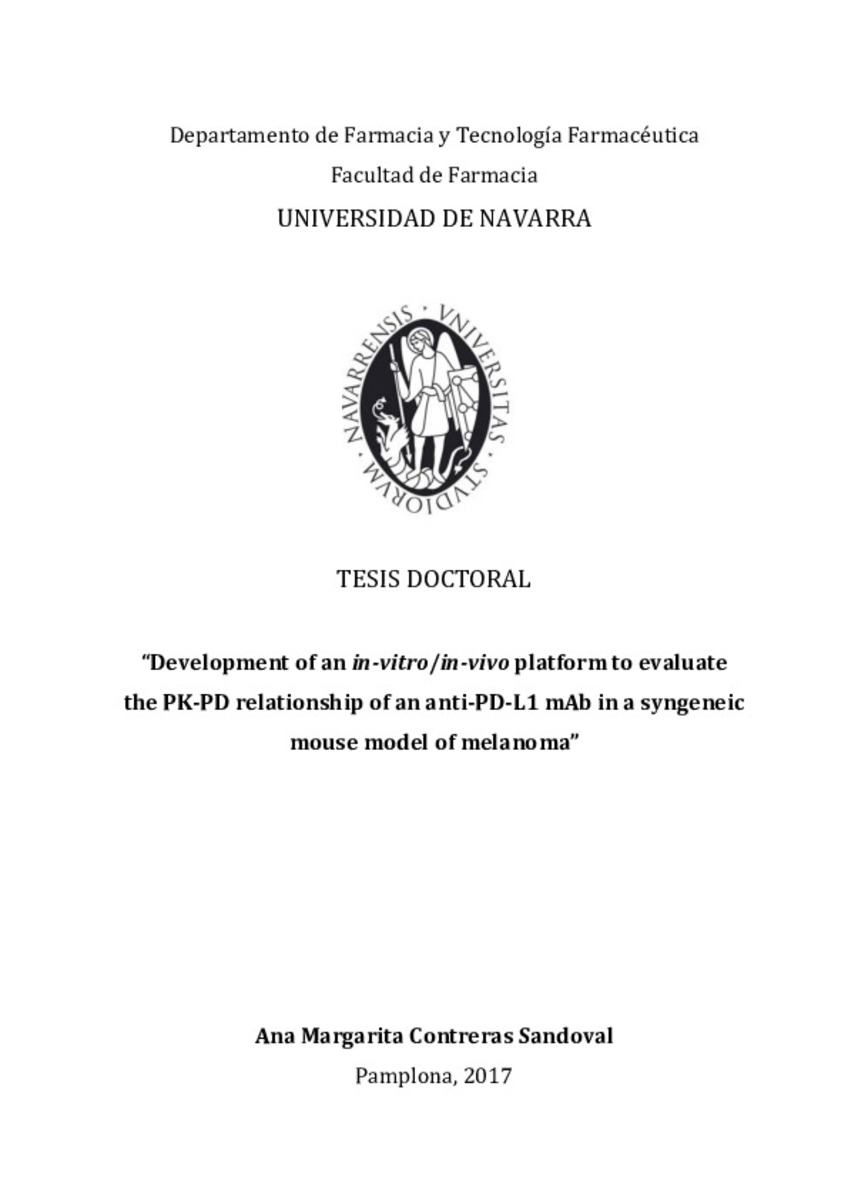Development of an in-vivo platform to evaluate the PK-PD relationship of an anti-PD-L1 mAb in a syngeneic mouse model of melanoma
Keywords:
Melanoma
Materias Investigacion::Ciencias de la Salud::Oncología
Defense Date:
28-Sep-2017
Citation:
CONTRERAS SANDOVAL, Ana Margarita. "Development of an in-vivo platform to evaluate the PK-PD relationship of an anti-PD-L1 mAb in a syngeneic mouse model of melanoma". Garrido, M.J. (dir.). Tesis doctoral. Universidad de Navarra, Pamplona, 2017.
Statistics and impact
0 citas en

0 citas en

Items in Dadun are protected by copyright, with all rights reserved, unless otherwise indicated.







